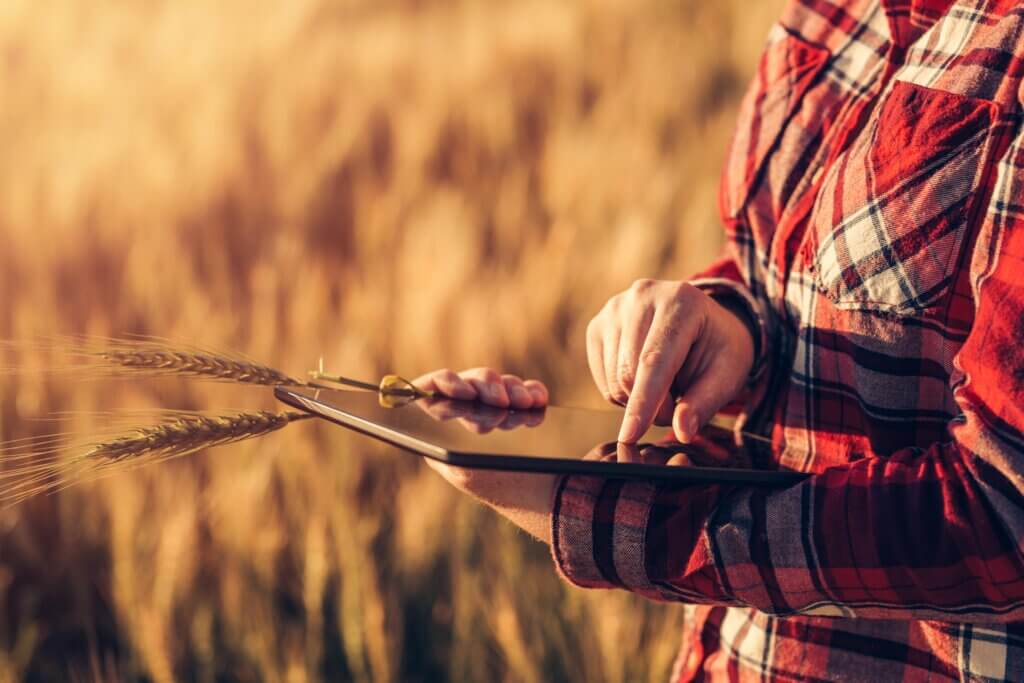Agritech is Driving the Future of Food

Modern technological advances and innovations are making significant changes in agriculture, developing the concept of precision farming. It’s connected with population growth, and therefore with an increase in demand for agricultural products. In this piece, you will learn about agricultural technologies, how they can make life easier for farmers and help meet growing demand in an environmentally friendly way.
Table of Contents
Traditional Farming Practices
Tillage is a series of methods of mechanical impact on the topsoil. This procedure is carried out to increase fertility and create comfortable conditions for the development of crops. Tillage is usually done with tools such as a plow or harrow to prepare for sowing.
Grinding the arable layer leads to an improvement in water permeability and air permeability of the earth. In addition, it helps to activate the activity of microorganisms in the soil and protect the field from weeds and various diseases. The choice of approach to tillage depends on the crop’s climate, biological characteristics, and the required conditions for its cultivation.
Various means are used to control pests. It can be biological and chemical substances. Pest control also includes soil cultivation and disease control. Cultural practices include crop rotation and strip cropping, culling, crop crossing, composting, and cover crops. These methods are widely used for pests control. They also help to prevent them from increasing the population. If there are too many of them, it can lead to crop loss.
Nutrient management is also an essential part of farming. This practice includes the source of nutrients for different types of farming and methods of using fertilizers produced by animal husbandry. Chemicals, compost, animal and green manure, and minerals are used as nutrients. With the help of crop rotation and the steam period, you can regulate nutrients in agriculture. If there is livestock on the farm, the manure can be used for growing forage crops. In managed intensive rotary grazing on arable land or pasture, liquid or dry formulations of manure are also used.
Irrigation of crops accounts for more than half of the world’s freshwater reserves. Water management is a critical practice in drylands. Irrigation is also used by farmers in addition, even in the presence of rainfall. In some regions, farmers use fallow for the year. This method allows growers to keep the soil moist and grow crops (next year).
Food production can be significantly improved through the application of a range of agricultural technologies and practices. The use of these technologies can dramatically affect the number of people at risk of hunger and help reduce food prices by about half. The International Food Policy Research Institute reports it.
AgriTech
Applying technology and innovation in agriculture to improve productivity and increasing process efficiency is what agritech is. Agricultural technological innovations help to optimize the cultivation process and improve all elements of farming. The primary purpose of applying innovation, in this case, is to grow more products using less space. Also, for farmers, introducing technology represents an opportunity to reduce costs. You can automate various tasks, save time and make farming activities less labor-intensive.
Navigating the field and crops
Using GPS technology to improve farm efficiency is called GPS farming or satellite farming. This technology has many uses in agritech, but they are used to increase yields while reducing costs. With the help of GPS, farmers receive valuable information about everything that happens on their land due to real-time field maps. In addition, it is thanks to GPS technology that farmers can use self-propelled tractors, which are highly beneficial for precision farming. Growers save a lot of time using programmed tractors that do the necessary fieldwork, while a person can do planning or other essential tasks.
Drones and Robots
Managing a farm with drones and other unmanned aerial vehicles also helps farmers significantly increase yields and save time. They have many functions and applications. For example, drones are equipped with cameras and are capable of capturing images of agricultural land. Thus, it is possible to identify areas affected by diseases. Such aircraft can spread various pest control agents or seeds throughout the field.
Agricultural robots are also making significant changes to the farming process. They benefit many of the farm’s production areas and reduce the overall cost of producing agricultural products. Depending on the type of robot, farmers can use them for various purposes, including spraying herbicides, sowing and harvesting, grazing control, and more. Robots provide more accurate work and also help reduce costs. As for the cost of the robots themselves, it is gradually decreasing; in addition, these costs pay off over time. It is an excellent option for automated farming, even with maintenance costs in mind.
Precision Agriculture and Big Data
Big data provides growers with many opportunities to level up their farm efficiency. They can receive detailed information about the condition of any zone, about the effectiveness of the farming methods that they use. Big data also provides environmental impact data. In addition, without big data, we could not get AI agricultural equipment, IoT sensors, and much more. Nowadays, the data available for visualization previously could not have been deciphered.
Agritech Market
The agricultural sector is the most crucial factor in the economic development of many countries. The planet’s population is constantly growing. With it, the demand for items produced by agriculture is growing—investment in technology solutions that improve farming efficiency increases, contributing to expanding the global agritech market.
Investments in the development of agritech tools and precision farming software contribute to the introduction of technologies in the global sector of agriculture. About 40% of the land area is allocated for agricultural land. By 2050, this area will grow as the population will probably grow to 10 billion. Innovations such as robotics, the Internet of Things, data analysis, vertical farming, and precision agriculture will increase yields by about 30%.
With smartphones in the hands of most farmers today, the concept of precision farming is becoming widespread. It empowers farmers to collect and analyze data, make better cultivation and protection decisions based on that data, and do it all quickly and cost-effectively.







